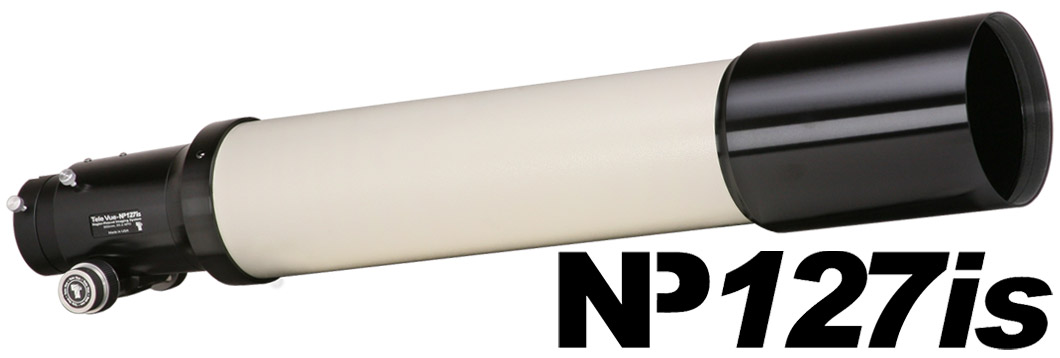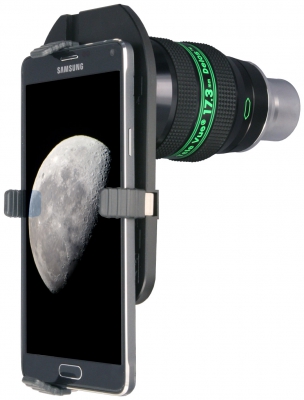NP127is: Imaging the Skies Over Tampa, FL!

Imaged with a Tele Vue NP127is APO (Nagler-Petzval) refractor equipped with ZWO ASI2600MC (color, CMOS, APC-C format) camera on Paramount MyT mount from driveway. Exposure time was 48-min using 16×180 sec subframes. Diffraction spikes were added with StarSpikes Pro 4 software.
If you follow the Tele Vue re-post (#RPTVO) hashtag on Instagram you’ll find many stunning images made with Tele Vue gear. That’s how we found Jun Luo (aka: cunucu_cheetah) and his Tele Vue-NP127is images. He’s relatively new to astrophotography and has produced some very nice images. We had a conversation with Jun about his use of Tele Vue gear for imaging and what follows is what he told us.

Imaged with a Tele Vue NP127is APO (Nagler-Petzval) refractor equipped with ZWO ASI2600MC (color, CMOS, APC-C format) camera on Paramount MyT mount from driveway. Exposure of 2.16-hours in Bortle 5/6 sky through Triad Ultra Narrowband Filter: 16×300 sec, 10×10 sec, and 16×180 sec.
My interest in
astrophotography
started a couple of
years ago after
attending a
photography
workshop in Banff,
Canada.
How did you get started in astronomy and astrophotography?
I had always been interested in astronomy when I grew up. Mostly the moon and solar eclipses. My parents were geography teachers and they found a very simple refractor telescope for me to play with. My interest in astrophotography started a couple of years ago after attending a photography workshop in Banff, Canada. One of the teachers introduced an equatorial star tracker to us for a long exposure (in landscape astrophotography). I bought a simple tracker and pointed my mirrorless camera with a 600mm lens to the Orion Nebula. As people often say: “the rest is history”.
Why did you decide to start using the NP127is?
Tele Vue scopes are
built in the US and
Tele Vue has a stellar
reputation for
customer services.
Soon after my attempts at Orion Nebula, I realized the advantage of an imaging telescope over a telephoto camera lens. I bought a doublet refractor. It was a decent upgrade over the camera lens but something felt missing. I went through several other refractors, including some expensive Japanese scopes. I finally decided to invest in a premium imaging scope like the Tele Vue-NP127is after my own experience and reading all the reviews I could find. My main interests are in deep space objects photography, especially all kinds of nebulae. The Tele Vue-NP127is 660mm focal length is perfect for such targets. It does not require expensive adapters and reducers for various configurations. No flattener needed either. It is also important to me that Tele Vue scopes are built in the US and Tele Vue has a stellar reputation for customer services.

Imaged with a Tele Vue NP127is APO (Nagler-Petzval) refractor equipped with ZWO ASI2600MC (color, CMOS, APC-C format) camera on Paramount MyT mount from driveway. Exposure of 3.33-hours through Triad Ultra Narrowband Filter for 20 x 600 seconds.
What do you like most about the NP127is after you started using it?
There are many things
that could go wrong
during an imaging
session but this scope
was never one of them.
All the positive reviews of Tele Vue-NP127is I read are true! The scope feels substantive but not heavy at all. It is 7-lbs lighter than the Sky-Watcher Esprit 120 I had but the Tele Vue-NP127is has a bigger and way faster lens. After star testing using my astro cameras, all sensors up to ASP-C (largest I have so far) captured pinpoint stars edge to edge. With the large field corrector, I feel it also future proofs me if I move to a larger sensor later. The stock focuser is robust, smooth, and accurate. I installed an Optec ThirdLynx DirectSync motor and I was able to run autofocusing routines and achieve repeatable accurate focus almost every time. There are many things that could go wrong during an imaging session but this scope was never one of them. Like one of the reviewers said, the Tele Vue-NP127is simply disappeared into the background and perform reliably every night. I believe my time under the stars is precious. Tele Vue-NP127is is indeed a worthy investment as the “only scope” for imagers.

Imaged with a Tele Vue NP127is APO (Nagler-Petzval) refractor equipped with ZWO ASI2600MC (color, CMOS, APC-C format) camera on Paramount MyT mount from driveway. Exposure of 4.33-hours through Triad Ultra Narrowband Filter for 26 x 600 seconds.
Where do you do your imaging from?
I set up and tear down every night. All my images taken so far are from my driveway in the suburbs north of Tampa, Florida. It’s about Bortle 5/6 sky with plenty of street lights. The relative lightweight, without compromising any of the mechanical and optical qualities, is definitely one of the reasons I decided on the Tele Vue NP127is. It’s easy to set it up every night. Currently, my Tele Vue-NP127is sits on top of a Paramount MyT mount. It balances perfectly on both axes. I put a PrimaLuce Lab computer on top of the scope and control everything inside the house (to get away from the Florida humidity and bugs). This year I had mostly paired the Tele Vue-NP127is with the new ZWO ASI2600MC Pro camera. The images this combo captured had been bright and full of details.
Did you observe, sketch, or image with Tele Vue gear? We’ll like your social media post on that if you tag it #televue and the gear used. Example:
televue #tv85 #ethos #jupiter
Do you want your Tele Vue images re-posted on Tele Vue Optics’ Social Media accounts? Use this hashtag for consideration:
#RPTVO
- Jun’s Instagram account.
- Find more Tele Vue-NP127is imager posts on this blog
- Tele Vue-NP127is page on our website (mobile version)
- Blog on our large scope visual accessory packages
- The #RPTVO hashtag on Instagram.





